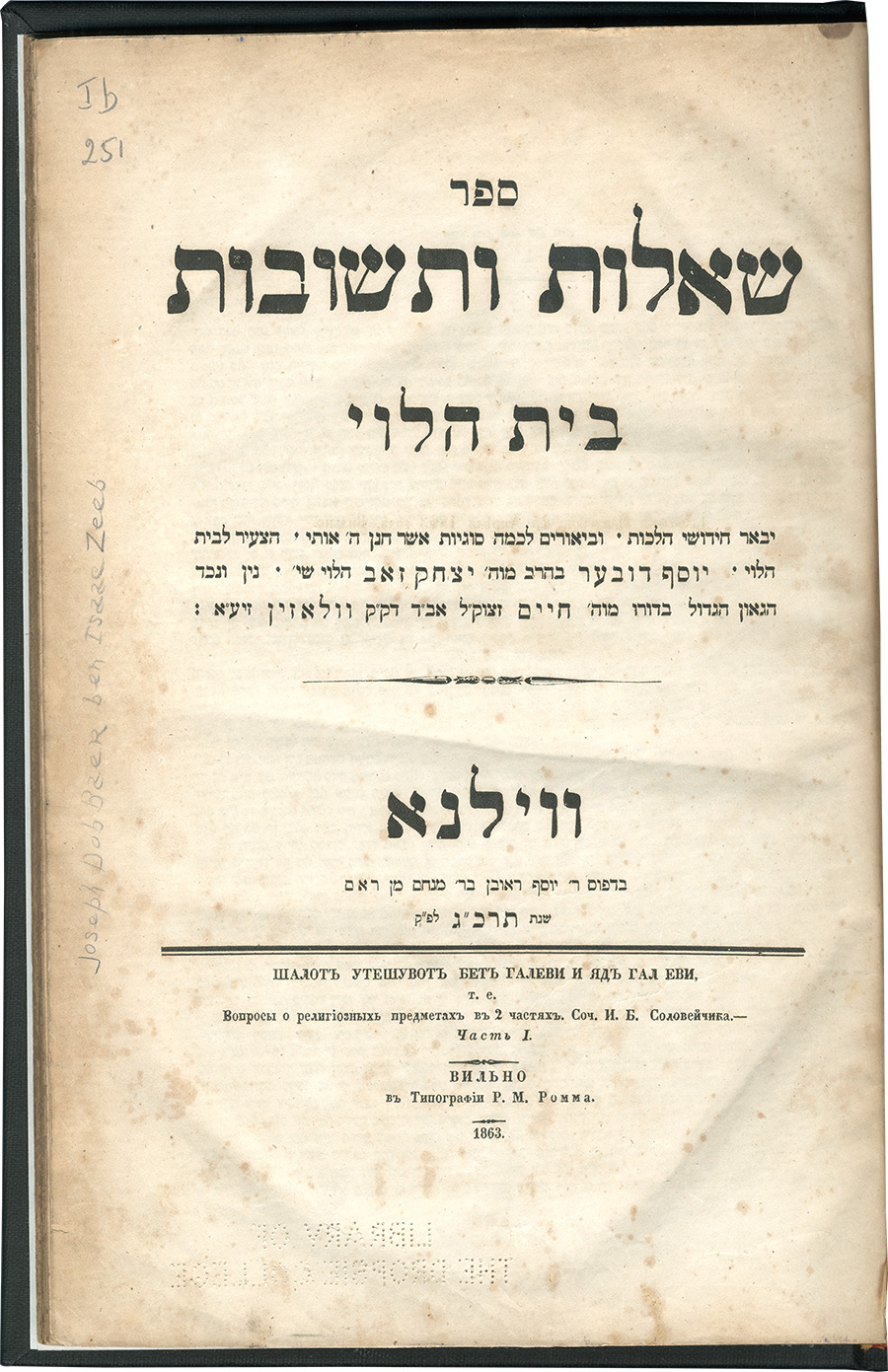As the dominant genre of rabbinic writing, a published volume of "responsa" or teshuvot (lit. answers) was commonly expected of great rabbinic minds throughout the generations of Jewish diaspora life. However, the responsa written by Rabbi Yosef Dov Ber ha-Levi Soloveitchik, (1820-1892) were neither typical responses to legal and ritual (halakhic) inquiries, nor were they written in the style of previous rabbinic thinkers. The text, whose title page is depicted here, represents a grand departure in halakhic writing and inquiry.
Taking the form of the halakhic responsum as a methodological means and rather than address practical halakhic queries, Soloveitchik developed insights into and innovative ways of understanding the corpus of Talmudic and medieval commentaries. His teshuvot represent studies in the theoretical halakha, especially difficult and puzzling legal positions adopted by previous rabbis, and particularly pertaining to spheres of halakha that were of no immediate practical importance, such as Temple ritual and purity. Originally published in 1863, the Teshuvot Beit Ha-Levi marked the beginning of a new era in halakhic thinking and outlined a revolutionary model of theorizing the halakha, popularized by his son, Reb Ḥayyim of Brisk, and the descendants of the Soloveitchik rabbinic dynasty. Writing in a time of growing anxieties over whether halakhic minutiae had any relevance in a rapidly modernizing and rationalizing Jewish world, Soloveitchik's teshuvot undertook a paradoxical response of yes and no to such a question: these teshuvot introduced a radically different mode of reasoning, beyond the historicism or empirical rationalizing about law and custom (prominent of the Western Wissenschaft des Judentums); but they also sought to validate the study of halakha for its own sake (Torah li-shema) and embodied the ethos of the Yeshivah of Volozhin, where Soloveitchik served as dean between 1854-1865.
